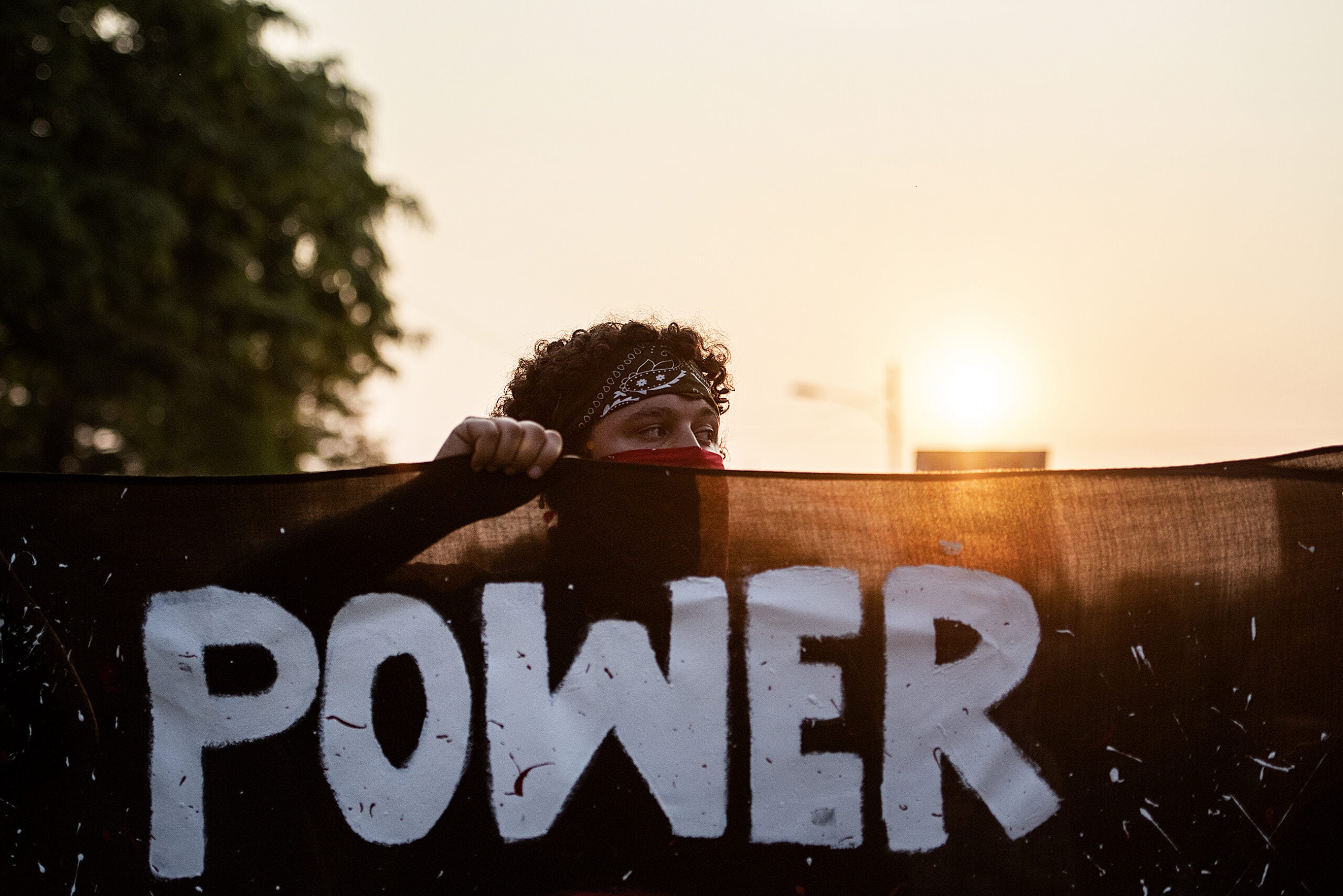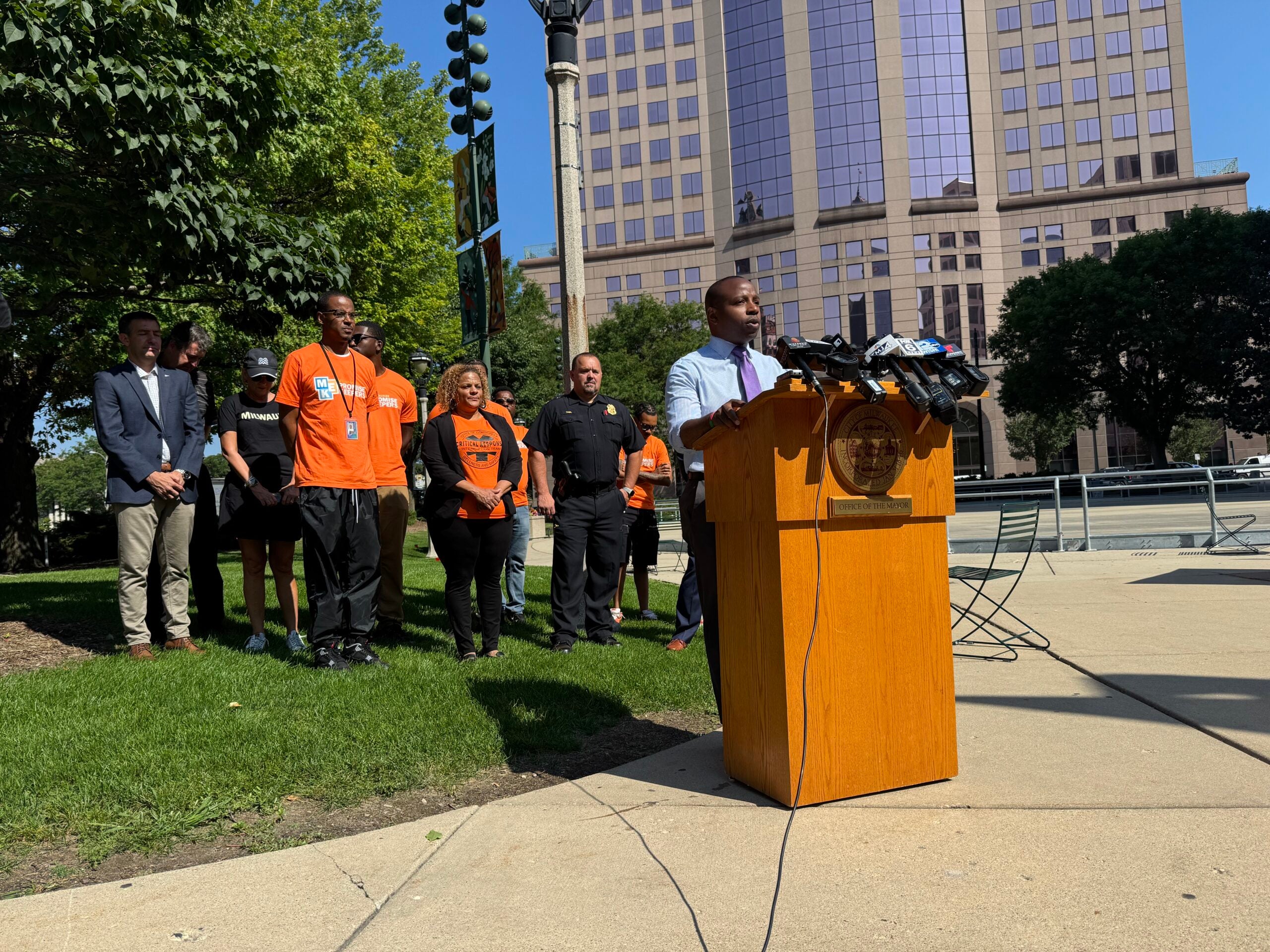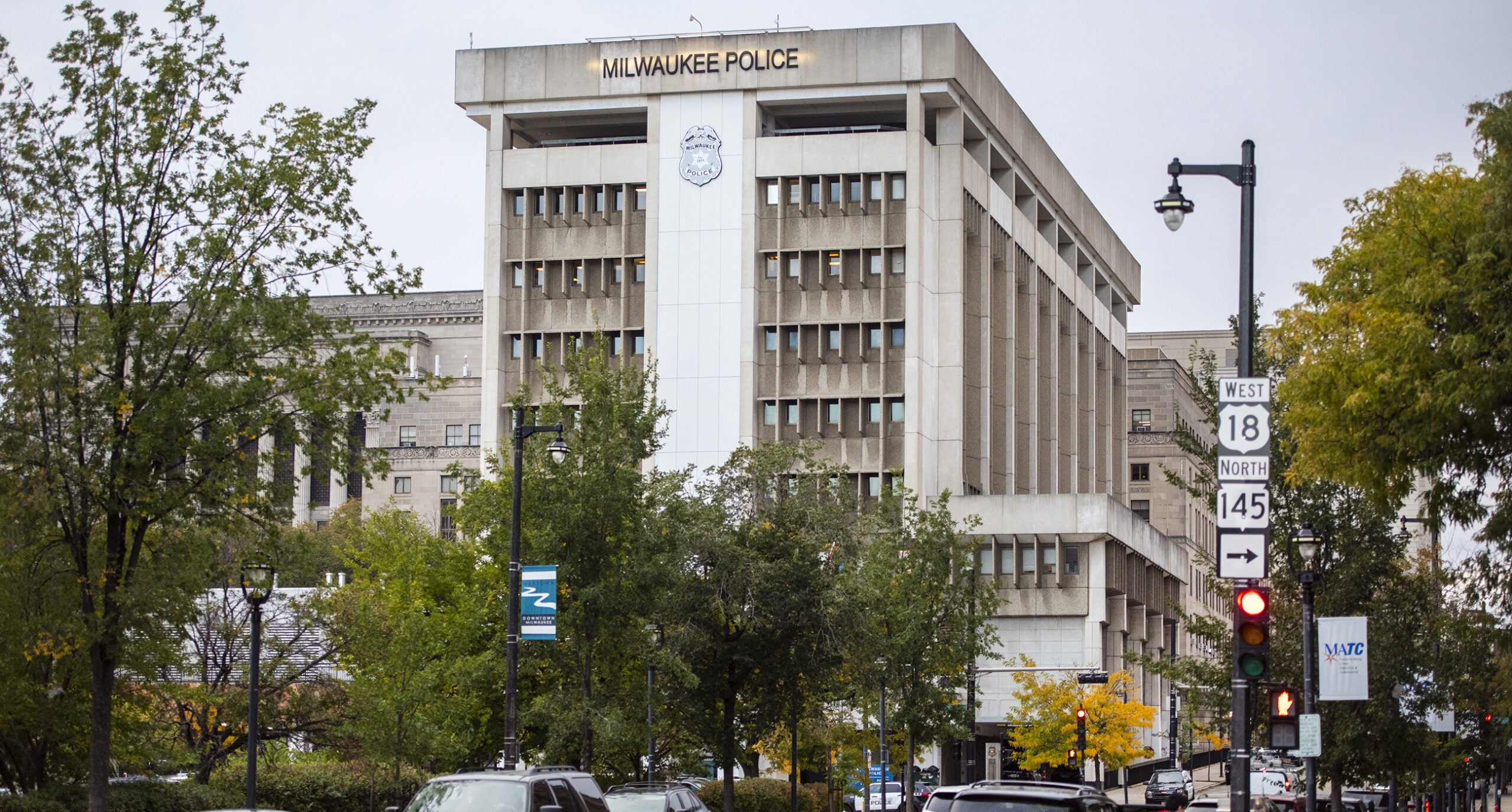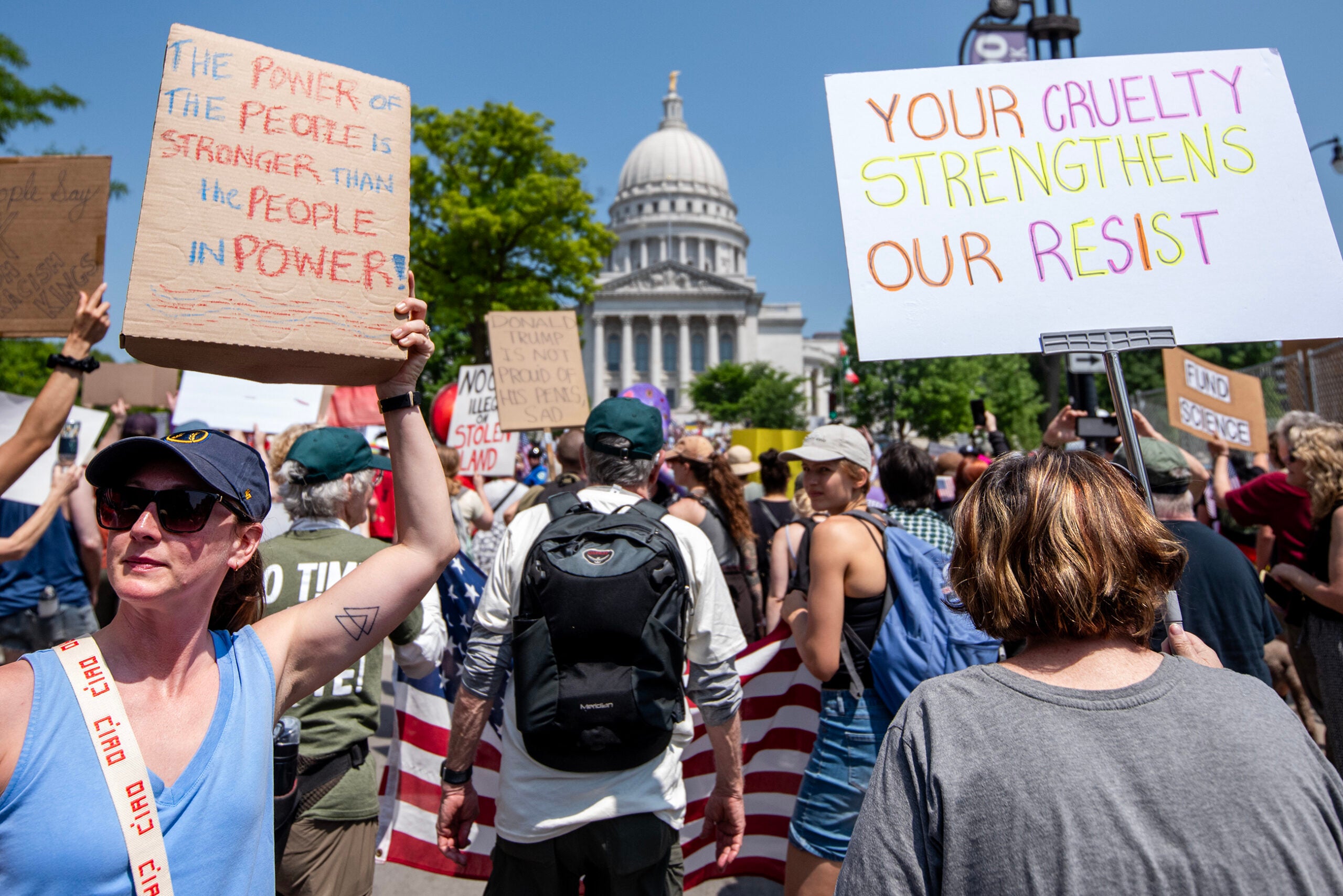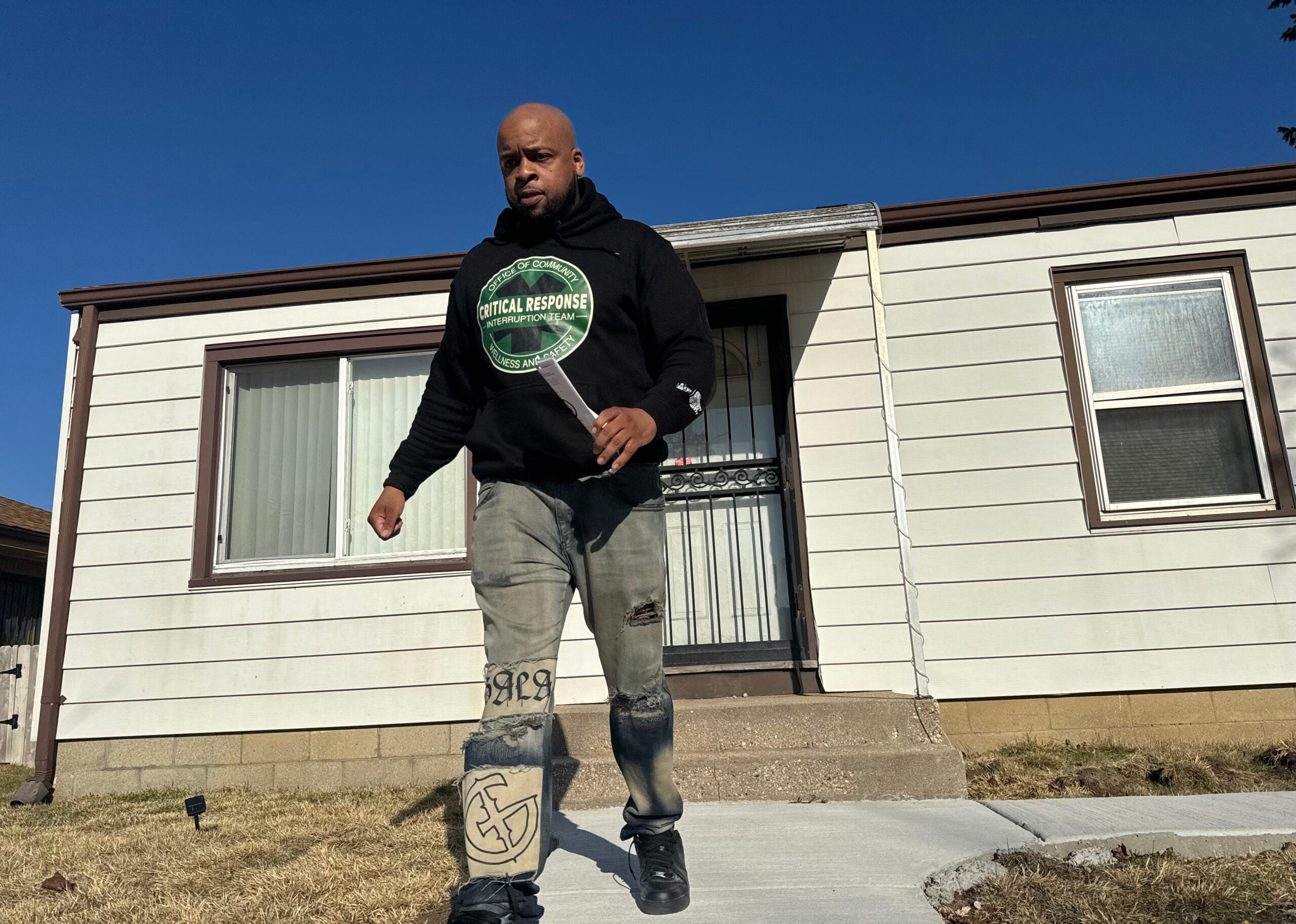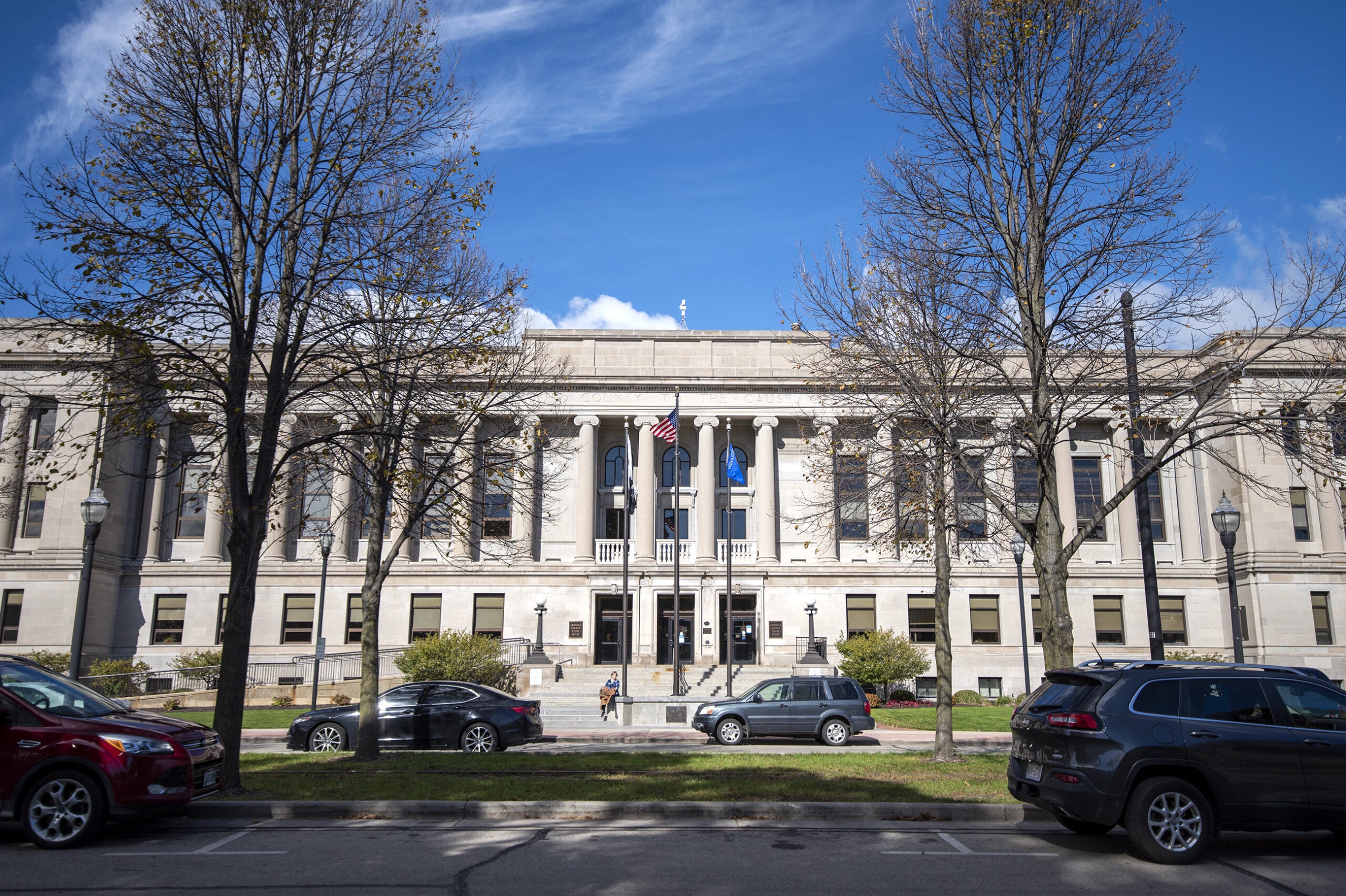Protesters mobilized in downtown Kenosha on Monday, demanding answers and accountability from city officials after police shot 29-year-old Jacob Blake, a Black man, on Sunday.
Starting in the afternoon, a two dozen people marched from the site of the shooting to the city’s downtown square, where the courthouse, a high school and the public safety building are located. Kenosha Mayor John Antaramian and Kenosha County Executive Jim Kreuser had been scheduled to speak at a 2:30 p.m. press conference there, but that conference was delayed following the convergence of protesters.
By evening the crowd of demonstrators had grown to hundreds, marching and gathering downtown. They rallied at Civic Center Park, where several organizers and local officials addressed the crowd.
News with a little more humanity
WPR’s “Wisconsin Today” newsletter keeps you connected to the state you love without feeling overwhelmed. No paywall. No agenda. No corporate filter.
Angela Cunningham, a defense attorney in the city, said she’d been worried something like Blake’s shooting would happen in Kenosha.
“It was only a matter of time before it happened here — I hate to say that, but as a defense attorney, I see some stuff that I don’t like,” she said. “Jacob Blake was the icing on the cake, was the straw that broke the camel’s back, but there are people every day whose civil rights are violated.”
She added that police use “a little too much force” when interacting with people in the community.
Shayna Griffin, the recently elected alderperson for Kenosha’s 7th District, urged the people gathered to get in touch, and pass on their concerns about city government and law enforcement so she could advocate for them in the City Council. Carl Fields, an activist with Ex Incarcerated People Organizing, told protesters they were engaging in “good trouble,” a reference to civil rights movement leader and U.S. Rep. John Lewis, who died in July.
“This is what good trouble looks like,” said Fields.
After the speakers wrapped up, protesters marched east.
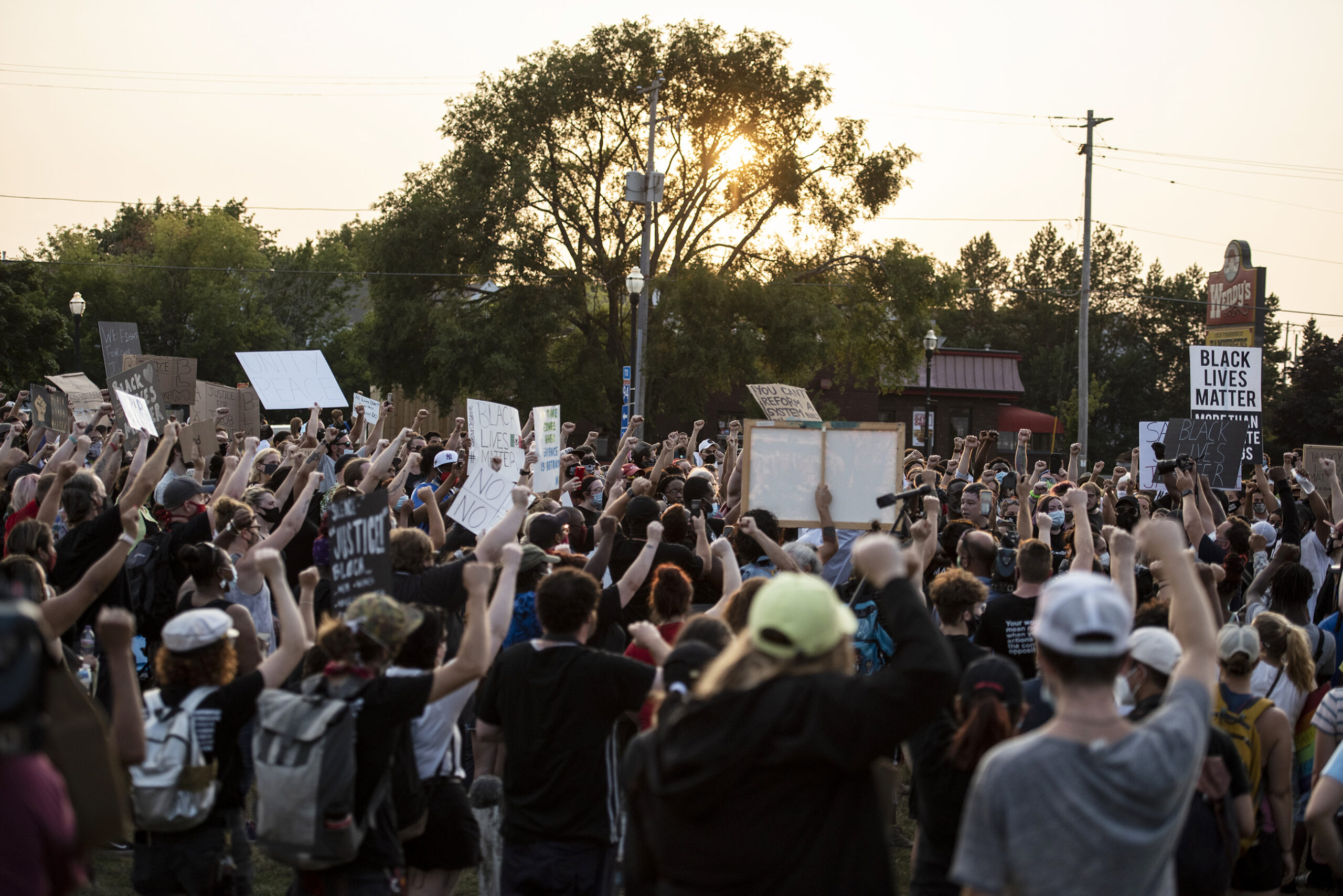
The Kenosha County Sheriff’s Department announced an 8 p.m. curfew for the city, but many protesters stayed out in the streets as that time came and went. According to reporters on the scene, some people threw water bottles at police officers, and by around 8:30 p.m., video showed police using tear gas to disperse the crowd. A notification reminding people of the curfew wasn’t pushed to phones until 8:21.
Tear gas dispersed pic.twitter.com/cOsQF5vJmR
— Matt Smith (@mattsmith_news) August 25, 2020
People set buildings, trucks and streetlights on fire during the night, and several businesses were vandalized and robbed, according to the Kenosha News.
Public outcry over the shooting was heard elsewhere around the state. Demonstrators marched on State Street in Madison on Monday well into the early hours of Tuesday, with the Madison Police Department estimating about 500 people gathered downtown late in the evening.
Some of those at the protest damaged and looted businesses, and started dumpster fires. Police eventually clashed with protesters, using tear gas, pepper spray and sponge rounds to disperse them. The department later reported that it made six arrests tied to the protests.
Several fires now ablaze in downtown Madison. pic.twitter.com/ujrevZnKnv
— Isthmus (@isthmus) August 25, 2020
Tear gas deployed in Madison. pic.twitter.com/w7fQGvh67R
— Isthmus (@isthmus) August 25, 2020
Protests had also been scheduled in Appleton, Green Bay, Fond du Lac and Oshkosh.
Activists from Kenosha want to see changes to the city’s Police Department, as well as policing around the country.
Tanya McLean, who identified herself as a disabled Army veteran, community leader, educator and licensed mental health clinician, said she hopes Kenosha residents, and specifically young activists, will be able to make their voices and their demands heard.
“We need one voice, one message, a consistent message,” she said. “Right now it’s peace, and we want answers.”
She also specifically called for the repeal of Graham v. Connor, a U.S. Supreme Court case that applies an “objective reasonableness” standard to determinations of whether police officers used excessive force. She also said Kenosha police need to wear, and turn on, body cameras.
“The tensions are running high in this town, the police are pulling people over, saying guns are in people’s cars — it’s bad,” she said.
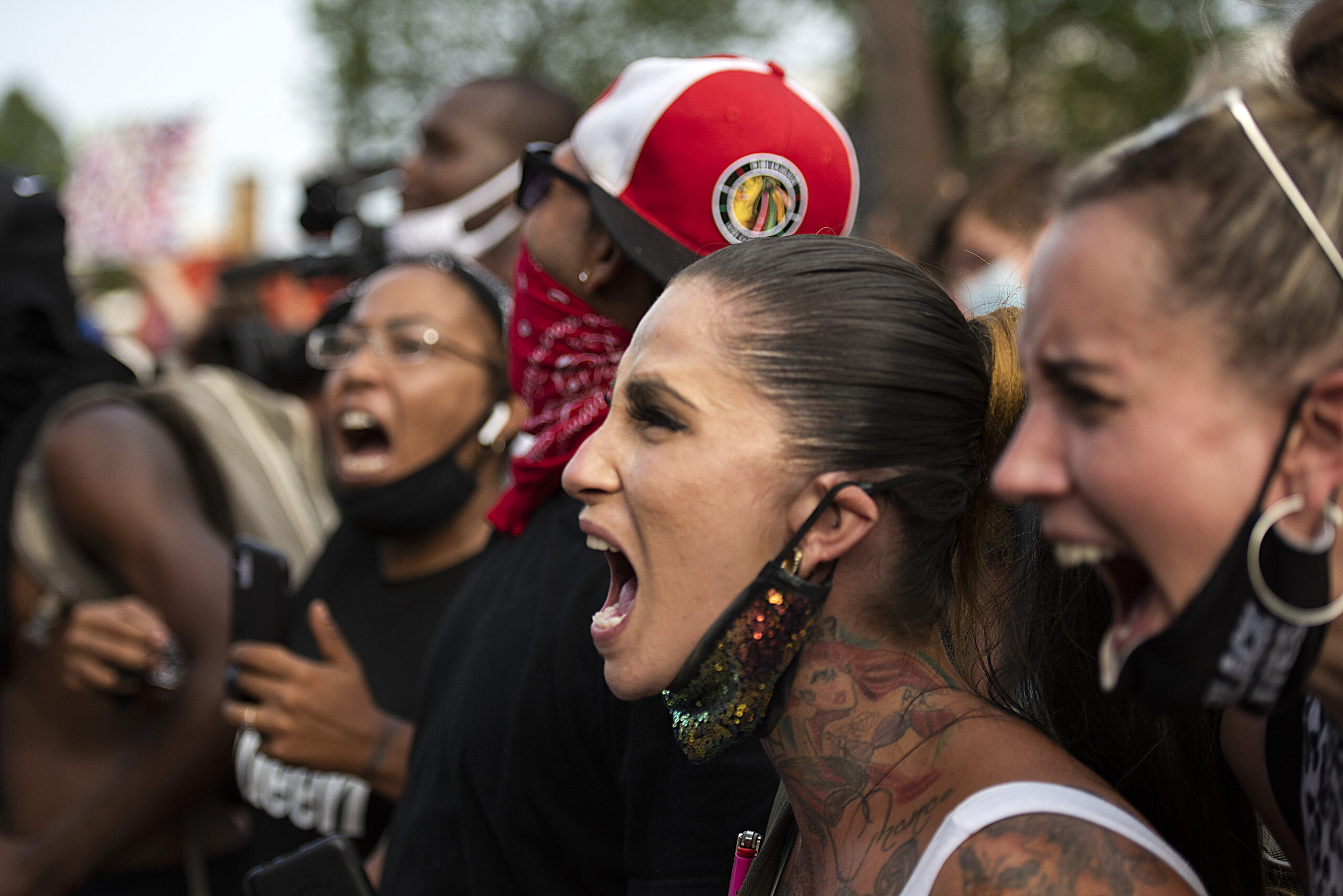
Zakee Darr, chairman of Black Lives Matter Lake County in Illinois, was among those marching in Kenosha on Monday. He said he arrived in Kenosha on Sunday night after hearing about the shooting.
Kenosha police shot Blake on Sunday while responding to a domestic violence call on the city’s north side, an incident that was captured on a widely circulated video by a witness across the street. The footage shows at least one officer shooting Blake multiple times in the back.
The incident prompted heated protests in Kenosha and Madison on Sunday night that lasted into the early hours of Monday morning.
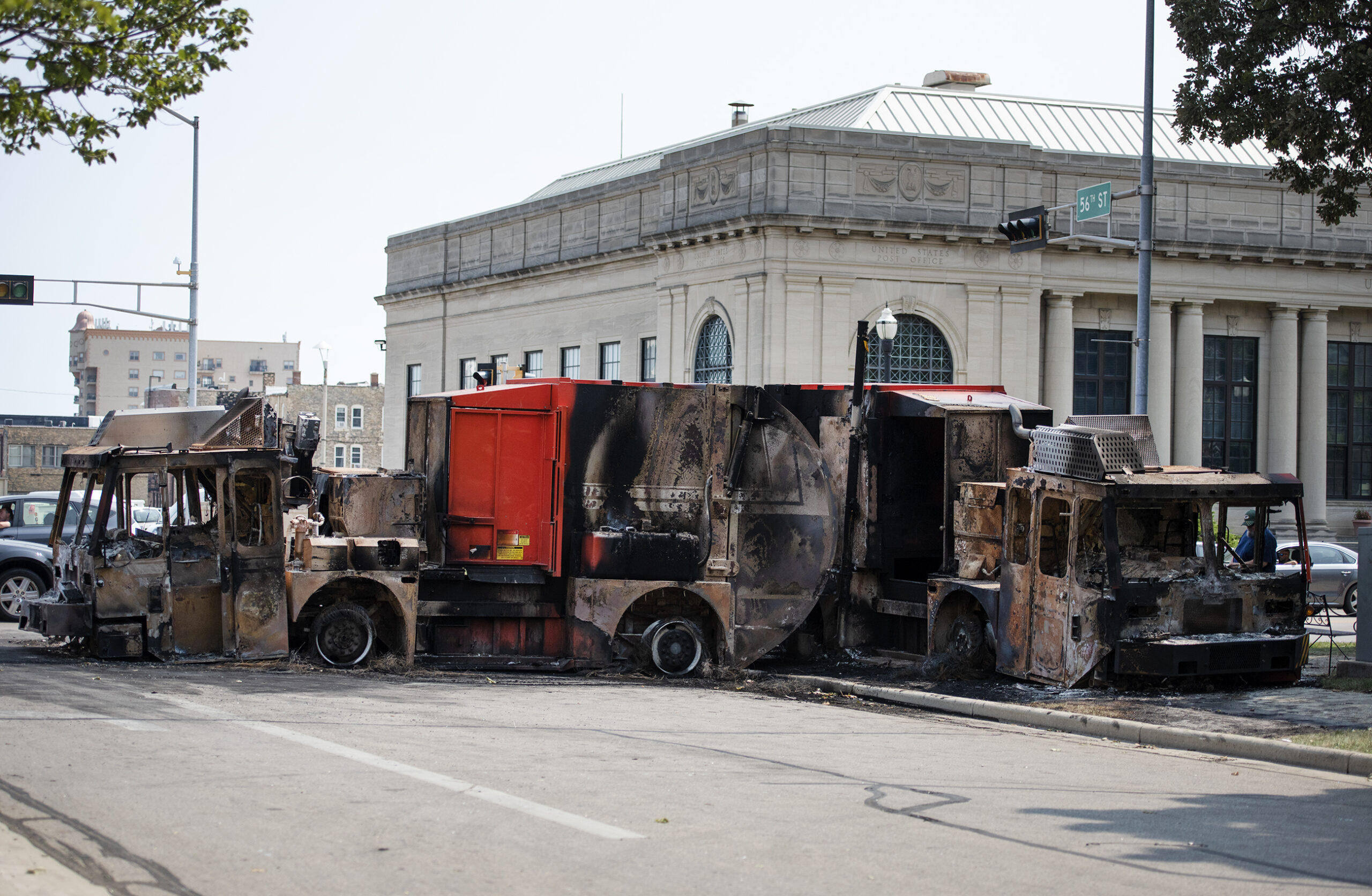
Gov. Tony Evers announced on Monday that he has authorized the National Guard to assist local law enforcement officers in anticipation of further protests.
“This is a limited mobilization of the National Guard focused on supporting the needs of local first responders to protect critical infrastructure, such as utilities and fire stations, and to ensure Kenoshians are able to assemble safely,” Evers said in a statement.
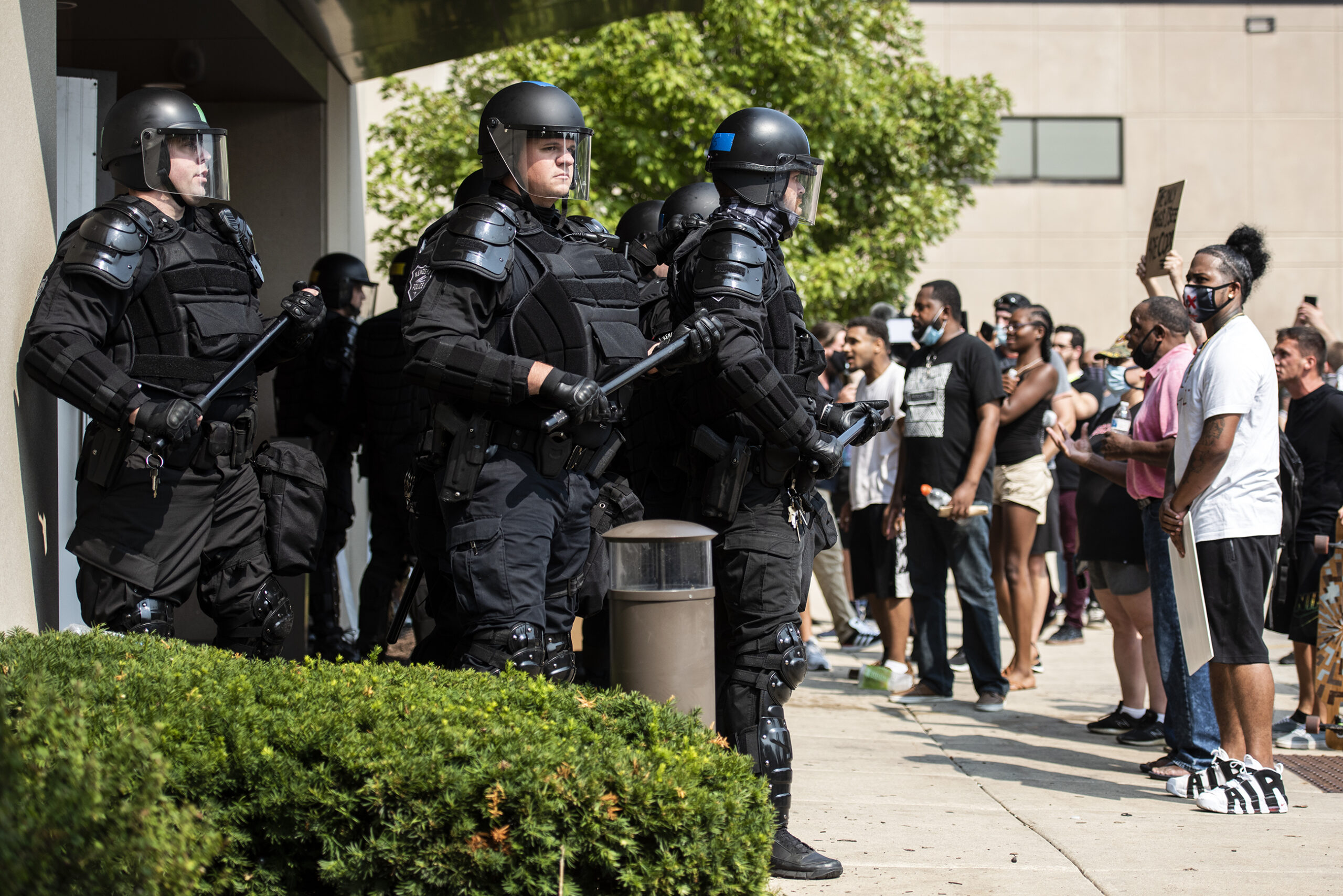
Political leaders in Wisconsin and around the country weighed in on the shooting on Monday, with many expressing sorrow and calling for an investigation. The state Department of Justice said it has begun its own investigation, and that the involved officers have been put on leave.
Evers also called for a special session of the Legislature to take up a package of police reform bills that the governor had previously introduced in June.
Wisconsin Public Radio, © Copyright 2025, Board of Regents of the University of Wisconsin System and Wisconsin Educational Communications Board.

